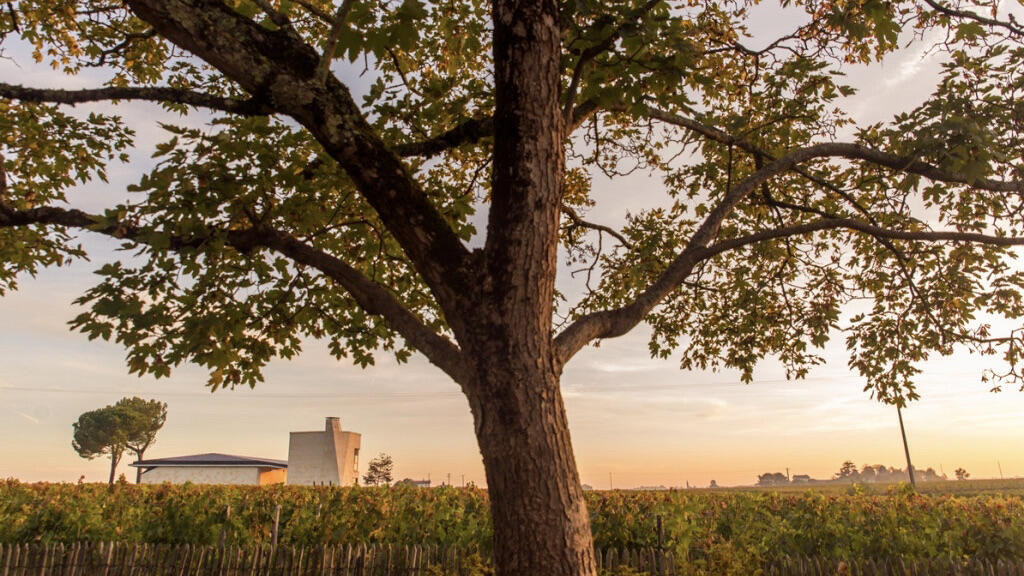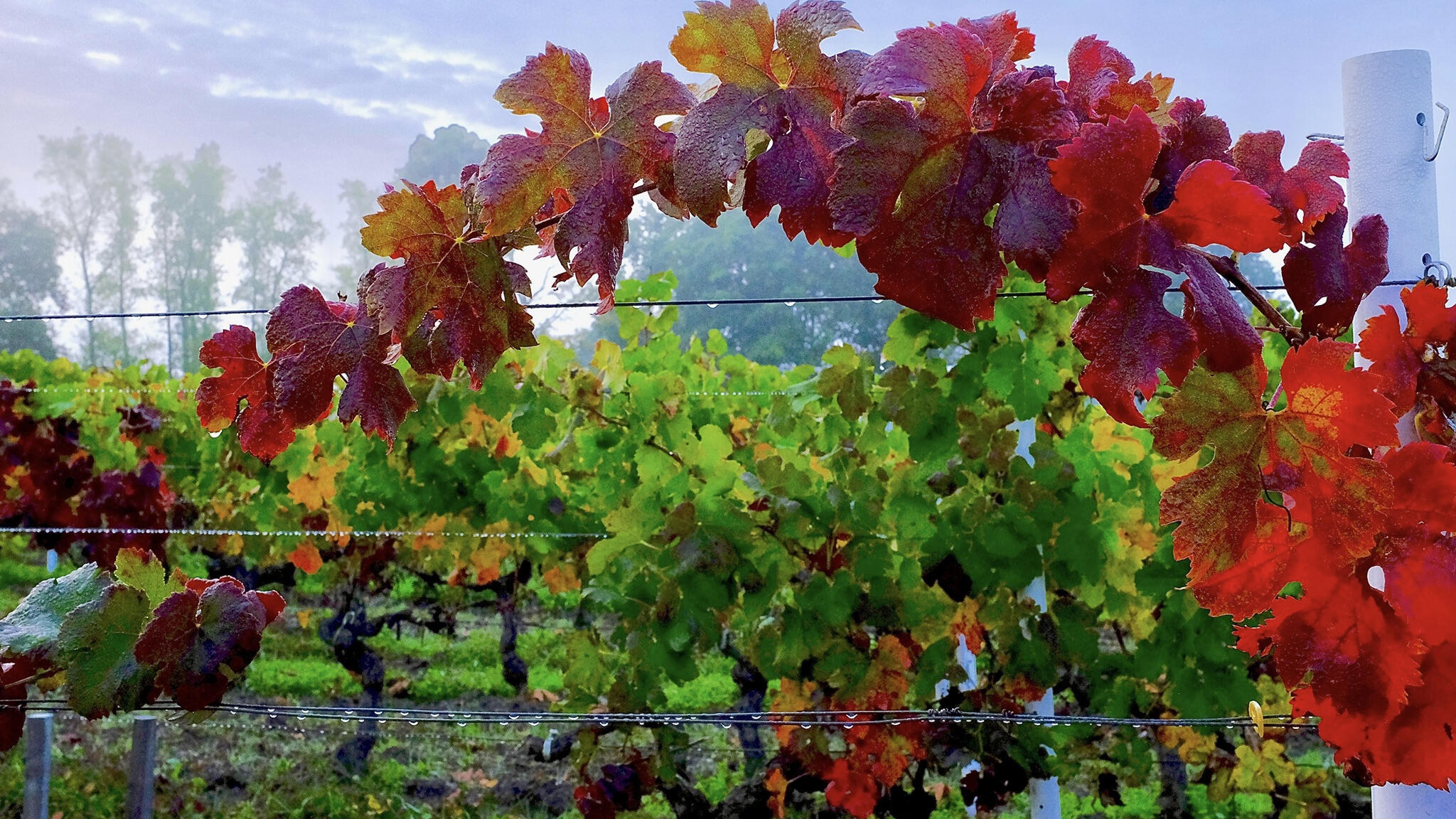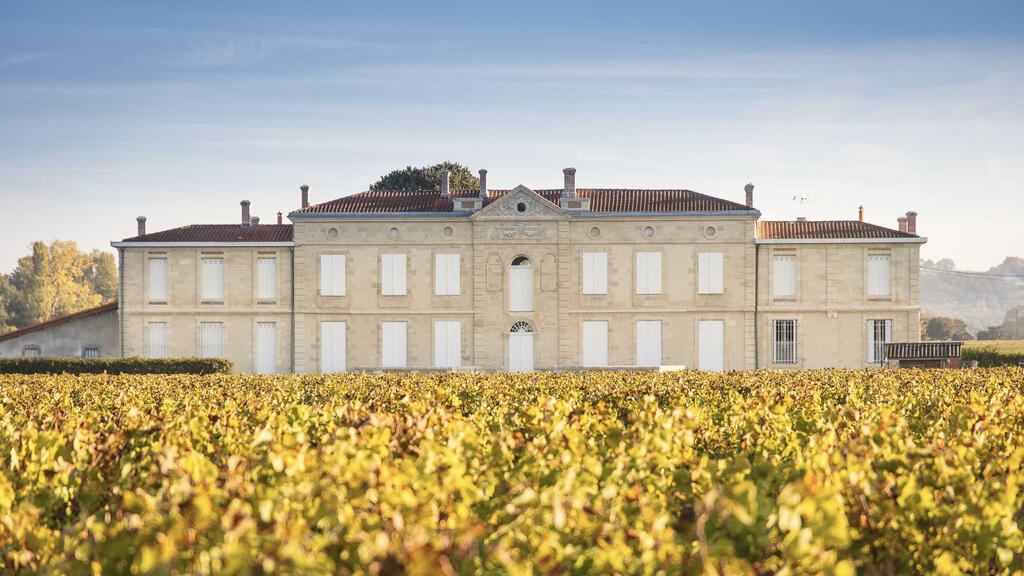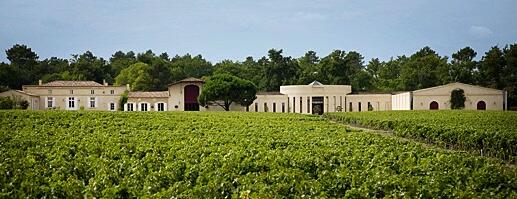Viticulture & Winemaking
We got to do a deep dive on what makes Bordeaux tick in both the vineyard and the winery with winemakers. It was special because this region has been known to be very quiet about what goes into their "Grand Vin de Bordeaux."
- Pomerol and "Right Bank" Merlot: We understand how clay works with Merlot in the vineyard.
- Médoc and Cabernet vs Merlot: Understand how the changing climate is making Cabernet Sauvignon more popular throughout Bordeaux.
- Sauternes and Sweet Wines: We get an inside perspective on making this golden sweet wine.
- White Bordeaux and Pessac-Léognan: We learn how the local forests help create age-worthy Sauvignon Blanc and Sémillon Blends.
Right Bank Merlot
The Right Bank is all about Merlot because of the clay and limestone soils. The right bank is also full of small producers with tiny estates. Don’t let size fool you though - this part of Bordeaux produces some of the world’s best, and most expensive wines.
We spoke to Fiona Morrisson, a Master of Wine and managing director of Le Pin about what makes the soils in Pomerol so perfect for Merlot.

Pomerol terroir is made of not just clay but is a mixture of clay with sand and clay with gravel. It’s the combination of those three elements that truly make up the appellation. Merlot likes to keep its feet wet, but it needs drainage too.
The band of gravel found in Pomerol is really important; it means good drainage in wet years, but also because it gives terroir for Cabernet Franc too.
Clay is important here because it gives generosity and silkiness and offsets beautifully the tendency that Merlot can have to be exuberant and alcoholic.
The gravels here were formed in the Jurassic period and they have an orange colour due to iron oxide. This gives a coffee and roasted quality to the wines. That torrefaction flavor comes from Crasse de Fer (Iron oxide in the gravels). This is quite contested and is as controversial as talking about minerality. We’ve found it to be empirical rather than scientific though.
Sandy soils are thought of as a dirty word but sand can contribute freshness and gives an approachability to the wines.
Merlot works so well in Pomerol because it’s an early ripening variety. Clay soils tame the exuberance even though it’s warmer here than in the Médoc. Merlot is a bit like a can-can girl but the soils of Pomerol can make it quiet and modest even though there are a few superstars. We’re not showy here; Merlot finds its balance in the soil and the winemaking.
Left Bank Cabernet Sauvignon Blends
We spoke to viticulturist and owner, Jean-Baptiste Cordonnier, of Château Anthonic, who makes wine in the Médoc. Get an insider's perspective on Merlot and Cabernet Sauvignon and why blending is so important in Bordeaux.

Merlot was widely planted in the 1980s and 1990s in the Médoc, especially in Moulis. But due to climate change people are looking to Cabernet Sauvignon in the future.
Cabernet Sauvignon has three main advantages in the vineyards compared to Merlot:
- It buds later than Merlot, and this gives it a big advantage against spring frosts, to which Merlot is much more susceptible.
- During the growing season Cabernet Sauvignon is less susceptible to mildew in the vineyard; this is important because the Médoc is humid.
- You get a more even flowering with Cabernet Sauvignon and so a more even production.
- As the years go by more and more Merlot is being ripped up in the Médoc and replanted with Cabernet Sauvignon, it’s the future.
However, Cabernet Sauvignon will always need the balance of Merlot. Cabernet Sauvignon brings structure, spice, and tannic power - it’s like the skeleton, important but alone does not create a whole being.
Merlot brings muscle, fat, and body, but again that along with the skeleton does not make a complete picture. Cabernet Franc is like the skin, without it the wine is not beautiful - bringing elegance along with structure. Finally, Petit Verdot, even just 1% can change a wine bringing florality, perfumed fragrance, and freshness. It’s the combination of these that makes a whole wine.
Sauternes Sweet Wines
The sweet wines of Sauternes are luscious, golden, and have aromas of marmalade, quince, saffron, and dried lemons, along with spicy notes. We spoke with owner and winemaker Jean-Christophe Barbe at Château Laville to learn more about why Sauternes is so hard to make.

Soil is very important in Sauternes with three main types being found; gravels near the Garonne river, sandy soils with a deep limestone base found near Barsac, and finally clay and gravel mixed, as we see near Château d’Yquem. Gravel soils help limit vigour, sandy soils give a freshness, and clay gives power and structure.
Sémillon is very susceptible to Botrytis due to its thin skins and will consistently become shrivelled, whereas Sauvignon Blanc might only be shrivelled 2 out of 3 years, but the aromatic side of Sauvignon Blanc makes it worth it.
We want to ensure we conserve the aromatics, the acid, and a sense of freshness as well.
The frequency of harvest is key. Some years we harvest 85% of the grapes in one go, others it’s many many tries (harvest passes), it depends on the vintage. For example, in 2011 we started harvesting the 31st of August and finished the 4th of November!
All of the important steps for making Sauternes are in the vineyard, once the grapes are harvested we are very low interventionist in the winery; we use a bit of SO2 but that’s pretty much it.
The wines are aged in oak for about 18 months, but we are looking to add complexity, not just flavor. We use oak with a medium-low toast to support the fruit flavors rather than to mask them.
This is also why we use larger barrels, 400 litres, not 225 litres, and only 50% new.
White Bordeaux
If you like full-bodied dry white then the blend of Sauvignon Blanc and Sémillon should be on your radar. Wines deliver intense aromas of lemon, pineapple, nuts, grass, and laser like sharpness that's balanced with oak aging.
We asked the owner of Domaine de Chevalier, a Cru Classé winery, to tell us about how they craft their white Bordeaux in Pessac-Léognan.

In Pessac-Léognan the terroir is really different compared to other parts of Bordeaux.
The forest is part of the microclimate of Pessac-Léognan. The forest is a bit cooler at night but warmer than other areas during the day. This shift in diurnal range is very important for acid retention in our grapes, especially the white grapes - this helps create wines with freshness. The soils are also more acidic near the forest, which, again, helps retain acid in the grapes.
To make exceptional dry white wines we go through the vineyard multiple times over a period of weeks to find the best berries. The grapes go from green, to yellow, to gold, and then translucent. After 2-3 days they start to change to purple and then it’s too late. We have to be very precise about the harvest for the white wines.
Sauvignon Blanc is very aromatic and expressive. We wait for it to become full of citrus and exotic fruit flavors rather than just grassy flavors - this makes it more complex and interesting.
Sémillon is a complex variety, it’s a much more complicated grape. And like a difficult child, it needs a bit more time. Comparing Sémillon and Sauvignon Blanc is like comparing apples to oranges - they’re very different things. Instead of being separate they actually complete each other.
How? In two ways:
Acidity: Sémillon is less acidic than Sauvignon Blanc. Just as Merlot brings body and roundness to Cabernet Sauvignon, so does Sémillon to Sauvignon Blanc. And just as Cabernet Sauvignon gives the backbone of the wine, so does Sauvignon Blanc.
Aging: Sémillon brings the possibility of aging and development in bottle. Honey, and exotic fruit flavors develop with Sémillon.
Sauvignon Blanc and Sémillon is a bit like a marriage; at the beginning they don’t know each other very well, but after 10 years or so you have a wonderful marriage of flavors and complexity. Time is one of the most important factors.